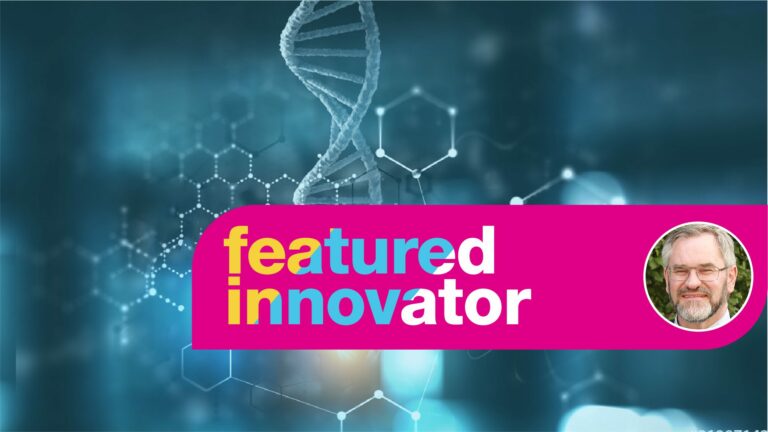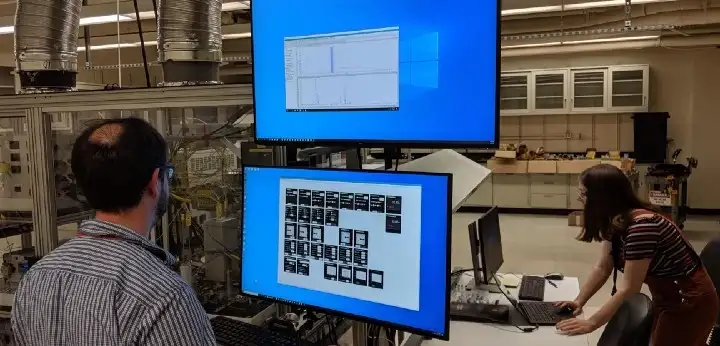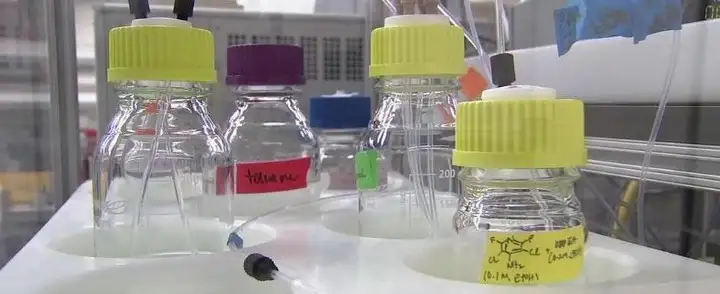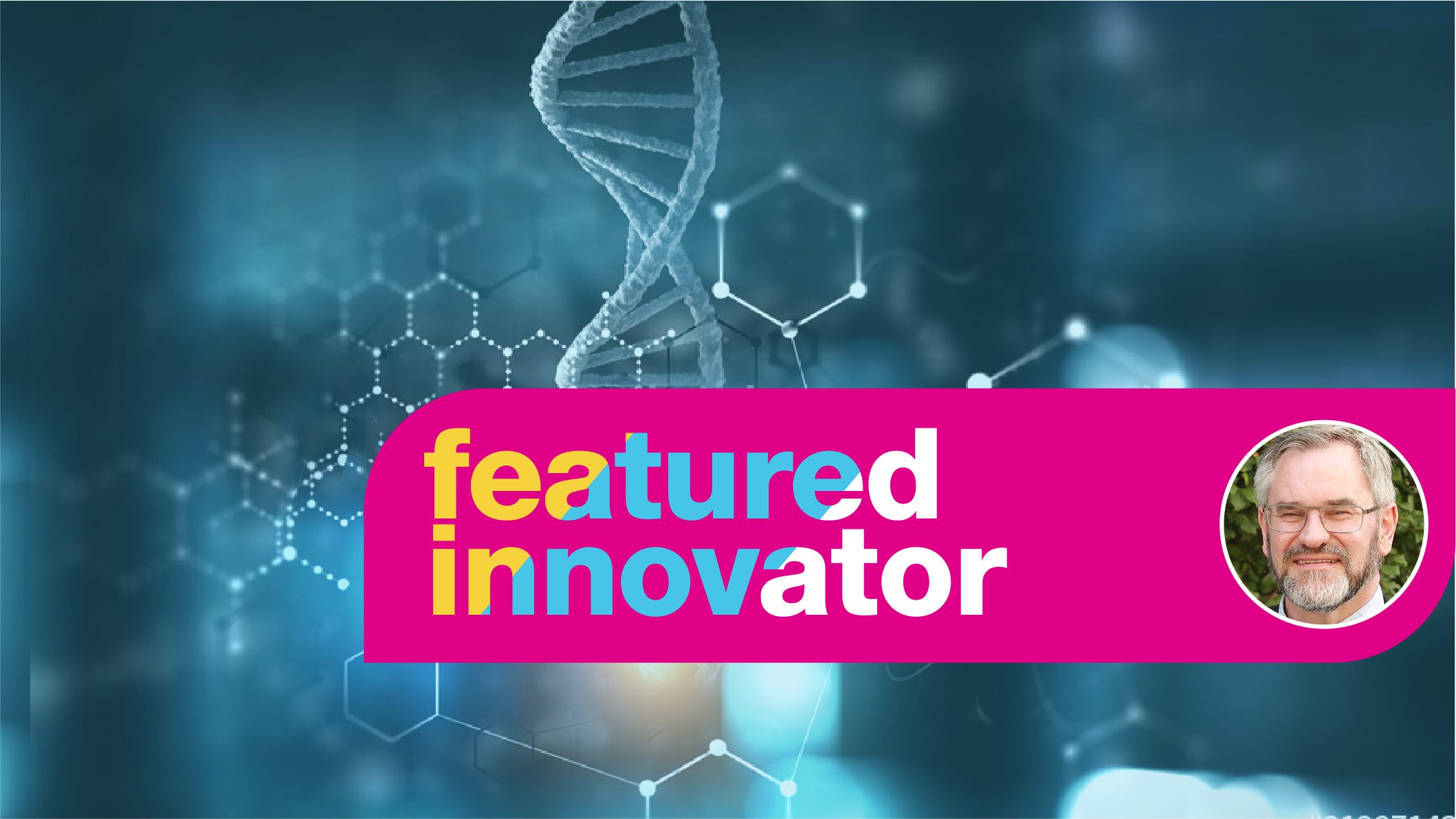
Nathan Collins is the Chief Strategy Officer within the Biosciences Division of SRI. Dr. Collins has a Ph.D. in Chemistry and works at the interface of innovative, translational R&D and commercialization.
An Interview with Nathan Collins
In our recent interview with Nathan, he talked to us about his current and future plans for leveraging artificial intelligence (AI) to help advance modern chemistry and SRI’s related work in the biosciences industry.
We started our chat with a little background on Nathan
An early start in the world of chemistry
Nathan: I have been interested in chemistry since high school; I became very interested in chemistry at a very early stage in my life and really enjoyed the subject. The logic of it appealed to me, chemistry just “clicked” for me.

I’d always connected chemistry with biosciences, even back then. I thought about its applications in biotech development and related areas. In those days, when I was still in high school, biotech was early stage. But I continued to follow my dream and did a Ph.D. in chemistry at the University of Southampton in the UK. After my Ph.D. I moved to the U.S. to do my postdoc at the University of Arizona, with the intention of one day going back to the UK to get a job in the industry. However, when the time came, the UK was going through a depression and there were no jobs to be had. I ended up getting a job at a small biotech in San Francisco, and I’ve been here ever since.
We discussed Nathan’s career and eventual move to SRI
Why did you choose to work for SRI Biosciences?
Nathan: The pioneers of biotech came out of San Francisco. So, this was a natural home for me. I had been working at a “for-profit” company on the drug discovery side. I was keen to get back into the core roots of doing basic research. At the very least, I was looking to do basic research that could translate into innovations that would have a marked impact on the industry. I really love the environment that SRI fosters from that perspective. This made me want to work at SRI. I joined the organization in 2006 and most recently was named Chief Strategy Officer in the Biosciences division.
We asked Nathan, what do you see on the horizon for biosciences in the next 10 to 20 years?
Regarding Biosciences: Where has it been? And where do you see it going?
Nathan: A lot of innovation is happening in the biology space right now. However, as a consequence, chemistry has become increasingly commoditized. This is evident through the use of labor in India and China, where research is done by qualified staff, but much more cheaply.
As with many other industries, the next phase in chemistry innovation will involve Artificial Intelligence (AI) and automation. This technology is now a practical reality being applied in the pharmaceutical industry. In fact, this is really taking off in multiple aspects of the drug discovery process from using big data to identify drug targets, designing and producing molecules more effectively, and designing clinical trials to be more effective; all from the perspective of getting drugs into the marketplace more quickly and cost effectively.
I have been working in the area of chemistry automation on and off for around 15 years and I’m currently doing a lot of work that uses AI in our SynFini™ program. So we were well positioned when interest in automation and AI began to grow recently.
Nathan discussed healthcare and automation with us

What is the future for healthcare and automation?
In general, the pharmaceutical industry is a little behind in automation uptake compared to other industries. A culture of being conservative and generally resistant and slow to change is driven by the industry being highly regulated. The impact of new technology can have unexpected consequences. Ultimately, you’re dealing with people’s lives, so pharmaceutical products require a lot of testing and trials.
However, the discovery process is an extremely expensive part of getting a drug to market. The latest reports say that it costs around $2.6 billion, on average, to get an effective drug to market, taking into account all of the failures across the industry. According to the same reports, the return on investment is around 1.9 percent as of 2018; if this is correct, you’d get a better rate of return if you put your money into mutual funds.
The industry is looking at its cost structure now and how it can reduce the cost of doing research and development. Outsourcing continues to be an opportunity, but offshoring is starting to lose its cost advantage. Now the industry has to look at automating processes as effectively as possible. Automation could really speed up the process of bringing a drug to market and make it much more cost effective.
What are the challenges of using AI in drug discovery
With AI you can do what humans can do, only a lot faster. The problem is you need a very good data set. And if you don’t have that data set, you’re doing a lot of extrapolation, which humans are good at, but machines aren’t so good at.
In life sciences, in particular, you must consider where you can appropriately use AI. To date, AI has demonstrated most use in interpreting imaging data such as MRIs, X-rays, CT scans or high content cell screening etc. In those applications, you usually have millions to billions of data points that you can use to construct an AI predictive model; for example, to extract complex information a human might miss or make a more data driven diagnosis.
Generally, in drug discovery, you would be lucky if you have a couple hundred data points to work with. This makes it very difficult to extrapolate for AI modeling — we call it the “sparse data problem”.
There are a few ways of thinking about AI algorithms and how to optimize them for such situations; we are doing just this at SRI. Alternatively, you can use the data to build a model but then experimentally test those hypotheses outcomes from the AI model. This can improve the data set and that can be fed back in an iterative way; essentially building a better model by experimental feedback.
In the process of building a better model, you start building better molecules. This is very similar to the manual way that medicinal chemistry is currently identify drug candidates through iterative design. However, if you do this now using AI and automation, you achieve a much faster cycle time from design to actually getting data, and then coming up with the next model. So that’s where we believe we can compensate for the sparse data challenge of AI, by actually coming up with automated processes to make the molecules and test them. By doing that you end up with a much better process for finding drug candidates overall.
We asked Nathan what else he has been working on

What are the most notable changes or breakthroughs SRI bioscience is working on?
SynFini™ is one of a series of projects that we’ve been working on in the Biosciences division for the last three or four years. We have been working on building a pipeline of technologies we are looking to as business of the future for SRI.
The first of these was the FOX Three Molecular Guidance System™. This is used for the intracellular delivery of biologic drug candidates. I was running the discovery group at SRI when we decided to prioritize that project and we’ve made great strides. The team working on this system includes Kathlynn Brown (and her team) as well as Melissa Wagner. We’re working focusing on how to position and develop it in such a way to build interest in the market. We are now at the proof-of-principle stage for the technology with a number of potential partners. We believe we can develop the technology and platforms into a very robust business.
Another project, the Fiber-optic Array Scanning Technology (FAST), is a method for doing extremely high throughput screening for drug candidates. We’re still validating this technology, but it’s really exciting.
Would you recommend working at SRI to a researcher?
The exciting thing about working at SRI is that you can tackle very, very, big problems. SRI has a very large talent pool of different capabilities. We would not have been able to deliver the SynFini program if we did not have access to the hardware and software engineers, analytical chemists, computational chemists, and so on that SRI offers. The array of knowledge across other technologies that aren’t particularly applied to the life sciences has been vital. Those teams collaborate together at SRI to focus on and solve big problems.




